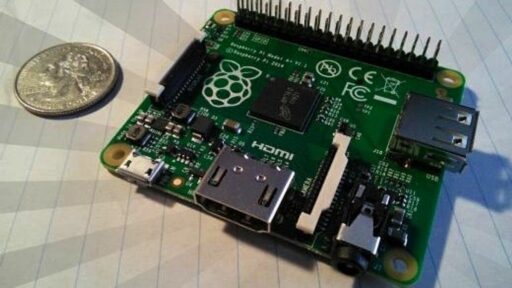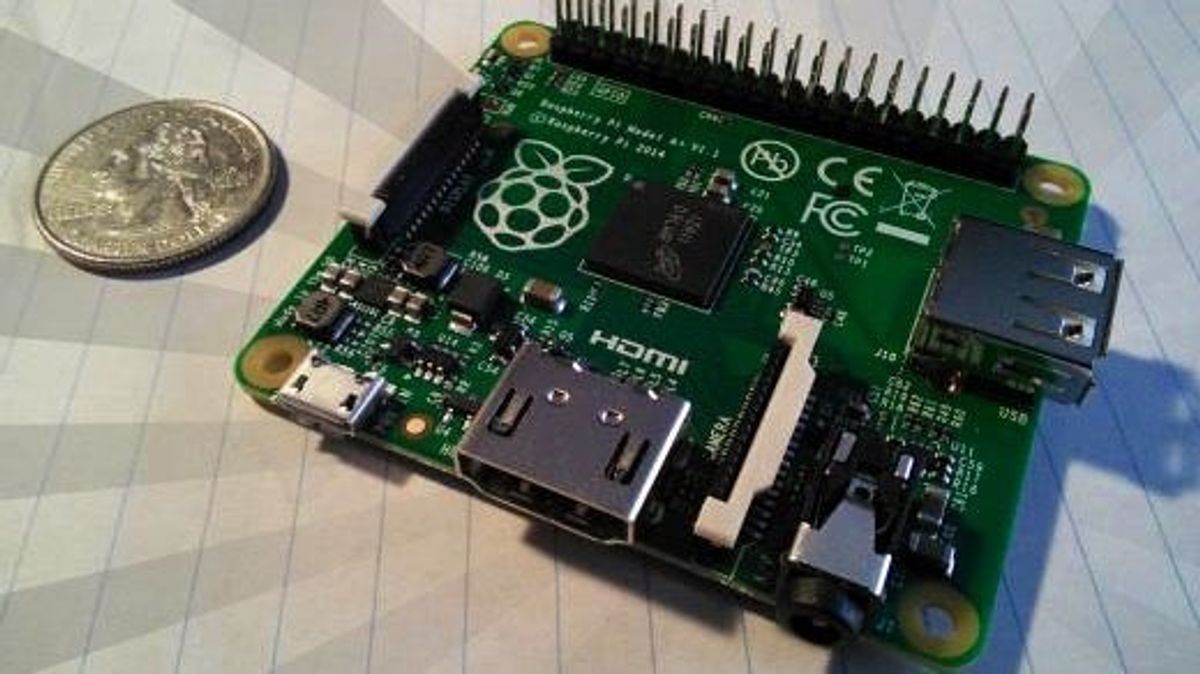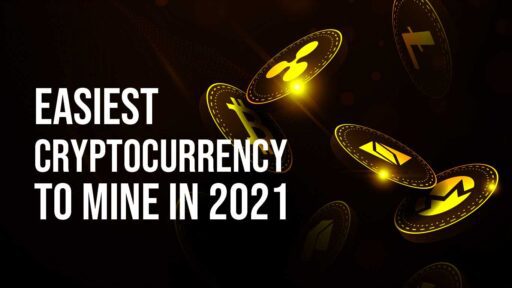The realm of cryptocurrency is ever-evolving, with Helium (HNT) emerging as a significant player in the intersection of blockchain technology and the Internet of Things (IoT). Helium’s innovative approach to creating a decentralized wireless network for IoT devices has garnered attention from investors and tech enthusiasts alike. This article delves into Helium’s impact on the IoT revolution, the intricacies of Helium mining, and the broader implications for the future of cryptocurrency.
Key Takeaways
- Helium is pioneering the IoT revolution by incentivizing users to build a decentralized wireless network, earning HNT tokens for their efforts.
- The migration of Helium to the Solana blockchain and integration with the Pyth Network underscores its commitment to robust infrastructure and scalability.
- Mining Helium through hotspots offers a unique way to earn cryptocurrency while contributing to the growth of IoT connectivity.
- Investors interested in Helium must weigh its potential for growth against inherent risks, comparing it to other cryptocurrencies in the market.
- Helium’s ecosystem fosters community engagement and governance, essential for its long-term success and sustainability.
Understanding Helium’s Role in the IoT Revolution

The Genesis of Helium and Its IoT Vision
Helium, established in 2013, has been at the forefront of the IoT revolution, providing a decentralized network that enables various industries to harness the power of connected devices. The network’s unique approach involves hotspots deployed by users, which not only facilitate wireless data coverage for IoT devices but also reward contributors with HNT tokens.
The Helium network’s design is a testament to the innovative use of blockchain technology in creating a people-powered solution for IoT connectivity. As the demand for IoT services grows, Helium’s model of incentivizing individual participation through mining could prove to be a game-changer in the industry.
Helium’s strategic shift to the Solana blockchain and the integration with Pyth Network’s price feeds are pivotal in enhancing its infrastructure, ensuring that it remains a key player in the IoT space.
Helium’s Migration to Solana: A Strategic Move
Helium’s recent transition to the Solana blockchain marks a pivotal moment in its evolution. This move is not just a change in underlying technology; it represents a strategic alignment with a high-performance network that can support Helium’s ambitious IoT vision. By leveraging Solana’s capabilities, Helium aims to enhance network scalability and efficiency, which are crucial for handling the vast amounts of data generated by IoT devices.
The integration with Pyth Network’s real-time price feeds is another cornerstone of this strategic shift. This ensures that Helium’s native token, HNT, is priced accurately and transparently, fostering trust and stability within the ecosystem. The table below highlights the key dates and milestones in Helium’s migration process:
| Milestone | Date |
|---|---|
| Announcement of Migration | January 2024 |
| Transition to Pyth Network | March 20, 2024 |
| Full Integration Completed | June 2024 |
The future of cloud crypto mining focuses on decentralization, sustainability, and economic impacts. Helium’s migration to Solana is a testament to these principles, aligning with industry trends and thought leaders’ advocacy for decentralized and sustainable practices.
As Helium continues to grow, it remains to be seen how this strategic move will influence its position in the competitive landscape of crypto networks. The focus on network development and the shift to a more robust blockchain foundation are steps towards ensuring that Helium remains at the forefront of the IoT revolution.
The Impact of Hotspots on IoT Connectivity
Helium’s network of hotspots has become a cornerstone for the burgeoning Internet of Things (IoT) ecosystem. By offering rewards in the form of HNT tokens, hotspot operators are incentivized to expand and maintain the network’s coverage. This peer-to-peer approach not only democratizes access to IoT connectivity but also ensures a robust and scalable infrastructure.
The Proof-of-Coverage consensus mechanism is a novel innovation that underpins the network’s reliability. Hotspot owners are rewarded for verifying the network’s coverage, which in turn, encourages the deployment of more hotspots. As a result, the Helium network is poised to play a pivotal role in supporting the exponential growth of IoT devices.
The Helium network’s design aligns economic incentives with network growth, creating a self-sustaining ecosystem that is responsive to the needs of IoT connectivity.
The table below summarizes the impact of Helium hotspots on IoT connectivity:
| Aspect | Impact of Helium Hotspots |
|---|---|
| Network Expansion | Facilitates rapid growth of IoT coverage |
| Decentralization | Promotes a user-powered, resilient network |
| Economic Incentives | Encourages continuous network contribution |
As the demand for IoT connectivity surges, Helium’s model of rewarding users for network participation could become increasingly significant. The network’s expansion is not only a technological feat but also a testament to the power of decentralized, incentive-driven ecosystems.
Helium Mining: A New Era of Cryptocurrency Earning

The Mechanics of Helium Mining
Helium mining is at the heart of the network’s innovative approach to creating a decentralized Internet of Things (IoT) infrastructure. Miners, known as hotspots, provide essential wireless data coverage for IoT devices, enabling a vast array of applications from smart homes to logistics. These hotspots are not just access points but are also responsible for validating transactions and securing the network.
To become a miner, one must deploy a Helium hotspot, which involves a straightforward setup process. Once operational, the hotspot begins to interact with other nearby hotspots, creating a mesh network that expands coverage. The mining process is unique in that it rewards participants not for complex computations, but for providing valuable network coverage and connectivity.
The Helium network’s success hinges on the collective contribution of individual miners, each playing a pivotal role in the expansion and utility of the IoT ecosystem.
The rewards for mining come in the form of HNT tokens, which are distributed based on the coverage and data transfer provided by each hotspot. The table below outlines the key factors influencing mining rewards:
| Factor | Description |
|---|---|
| Coverage | The range and quality of data coverage provided by the hotspot. |
| Data Transfer | The amount of data transmitted through the hotspot. |
| Network Participation | Active involvement in validating transactions and securing the network. |
As the network grows and evolves, the dynamics of Helium mining continue to adapt, ensuring that miners are incentivized to maintain and expand the network’s capabilities.
Evaluating the Profitability of Helium Mining
When considering the profitability of Helium mining, it’s essential to analyze various factors that influence potential earnings. The recent migration to the Solana blockchain has been a strategic move for Helium, aiming to enhance the network’s efficiency and scalability. This transition could potentially lead to increased demand for Helium’s native token, HNT, and subsequently, higher mining rewards.
However, profitability is not solely dependent on network improvements. Costs associated with mining, such as electricity and hardware, play a significant role. Here’s a simplified breakdown of the key considerations:
- Electricity costs: A major recurring expense for miners.
- Hardware investment: Initial cost of purchasing Hotspots.
- Network growth: More Hotspots can mean more competition, affecting individual earnings.
- Token price: Fluctuations in HNT value directly impact profitability.
While Helium’s focus on network development positions it as a critical player in the IoT space, miners must also consider the dynamic nature of cryptocurrency markets and the associated risks.
Staking Helium can offer additional avenues for earning, with the potential for passive income through staking rewards. Yet, it’s crucial to understand the risks involved, such as potential losses due to network disruptions or vulnerabilities. By weighing these factors, miners and investors can make informed decisions regarding their participation in Helium mining.
The Future of Mining: Sustainability and Expansion
The future of Helium mining is inextricably linked to the broader trends in the cryptocurrency space, particularly the shift towards sustainability. The adoption of green energy is not just a trend but a necessity, as the environmental impact of mining activities comes under increasing scrutiny. Helium’s low-energy consensus mechanism positions it well in this regard, but the network must continue to innovate to remain at the forefront of sustainable practices.
- Adoption of renewable energy sources
- Implementation of energy-efficient hardware
- Exploration of carbon offset initiatives
The expansion of Helium mining will depend on balancing growth with environmental responsibility. As the industry evolves, Helium must adapt to ensure that its mining operations contribute positively to the global push for sustainability.
The industry’s focus on green energy and environmentally friendly projects is a promising sign for Helium. With technological advancements, such as the integration of AI, the potential for more efficient and sustainable mining processes is significant. However, as the landscape changes, miners must stay informed and be prepared to adapt to new technologies and regulations that aim to reduce the carbon footprint of cryptocurrency mining.
Investing in Helium: Opportunities and Risks

Helium’s Market Position and Growth Potential
Helium’s strategic advancements, including its migration to the Solana blockchain, have positioned it as a formidable entity in the IoT sector. The integration with Pyth Network for accurate price feeds further solidifies its market stance, offering a more reliable and transparent ecosystem for users and investors alike.
The recent uptick in Helium’s price, now at $8.62, reflects a positive market sentiment and the potential for continued growth. This is bolstered by the network’s unique approach to IoT connectivity through user-deployed hotspots, which not only extends the network’s reach but also incentivizes participation through HNT rewards.
While the future of Helium appears promising, it’s essential to consider the volatility inherent in the cryptocurrency market. The anticipated average cost for HNT is projected around $14.101 for 2024, which suggests a significant growth trajectory. However, investors should remain cautious and conduct thorough research before making investment decisions.
Helium’s growth is not just about price speculation; it’s about the real-world utility and adoption of its network. The expansion of IoT applications across industries presents a vast opportunity for Helium to increase its relevance and user base.
Risk Assessment for Potential Investors
Investing in Helium, like any cryptocurrency, involves a spectrum of risks that must be carefully evaluated. Understanding the inherent volatility and the potential for rapid changes in value is crucial. The market for Helium is influenced by a variety of factors, including technological advancements, regulatory changes, and market sentiment.
- Market Volatility: The price of Helium can fluctuate wildly in a short period, influenced by market trends and investor sentiment.
- Regulatory Risks: Changes in regulations can have a significant impact on the value and legality of Helium.
- Technological Risks: As an emerging technology, Helium faces risks associated with security breaches and network stability.
It is essential for investors to balance hash rate and power efficiency, consider long-term profitability, and engage with the crypto community for guidance.
Before diving into Helium investment, it’s advisable to conduct thorough research and consult with financial experts. Remember, the decision to invest should be based on a comprehensive understanding of the risks and an informed assessment of the cryptocurrency’s future prospects.
Comparative Analysis: Helium vs. Other Cryptocurrencies
When comparing Helium (HNT) to other cryptocurrencies, it’s essential to consider the unique value proposition that Helium brings to the table. Unlike many cryptocurrencies that focus on financial transactions, Helium’s primary goal is to create a decentralized wireless network for IoT devices. This positions Helium as a niche player with a specific use case, which may appeal to investors interested in the IoT space.
Helium’s recent migration to the Solana blockchain and the integration with Pyth Network for price feeds are strategic moves that underscore its commitment to robust network infrastructure.
However, when it comes to market performance, Helium’s price trends can be contrasted with major players like Bitcoin and Ethereum. For instance, while Bitcoin and Ethereum have seen significant price fluctuations, Helium’s market position is influenced by its network growth and hotspot deployment.
Here’s a quick comparison of recent price movements:
| Cryptocurrency | Price (USD) | Change (%) |
|---|---|---|
| Bitcoin (BTC) | $65,360.00 | +3.25% |
| Ethereum (ETH) | $3,156.73 | +6.61% |
| Helium (HNT) | Data Needed | Data Needed |
It’s important for potential investors to conduct a thorough risk assessment before investing in Helium or any other cryptocurrency. While Helium offers a unique proposition, it also carries risks inherent to the crypto market and specific to its role in the IoT ecosystem.
The Technological Backbone of Helium Crypto

Exploring the BlockDAG Architecture
The BlockDAG architecture represents a significant leap forward in the realm of cryptocurrency mining. Unlike traditional blockchain, BlockDAG allows for parallel processing of transactions, leading to increased scalability and efficiency. This architecture is particularly well-suited for Helium’s IoT-focused network, where numerous devices require simultaneous data validation.
BlockDAG’s X-Series mining rigs are at the forefront of this innovation, boasting high daily earnings of 200 to 2,000 BDAG coins with minimal energy consumption. These rigs are predicted to disrupt the market and reshape the crypto mining industry with significant growth potential.
The enthusiasm for BlockDAG’s innovative solutions is palpable, underscoring its significant sales figures and burgeoning market presence.
With over $2 million in miner sales and 4200 units sold, the market is taking notice of BlockDAG’s potential. Market analysts envision a multiple x increase post-launch, akin to crypto giants like Bitcoin and Kaspa. For those invested in the future of crypto mining, BlockDAG offers a compelling narrative of growth and innovation.
The Role of Pyth Network in Price Feeds
The Pyth Network has emerged as a transformative force in the realm of financial data, particularly for the Helium ecosystem. Its real-time price feeds are crucial for a wide range of applications, from smart contracts in decentralized finance to traditional trading and lending services. The accuracy and high-frequency updates provided by the Pyth Network ensure that users and developers can rely on the data for informed decision-making.
- Over 400 data feeds support a multitude of applications.
- ‘Pull oracle architecture’ guarantees the precision of data.
- Real-time updates are essential for smart contract functionality.
The integration of Pyth Network price feeds into Helium’s infrastructure marks a significant step towards enhanced data accuracy and reliability, fostering trust within the ecosystem.
The recent adaptation of Helium to Pyth Network’s feeds has been met with a positive market response, indicating a robust future for HNT. The focus on transparent and timely market data is expected to inform user transactions more effectively, contributing to the overall health and growth of the Helium network.
Ensuring Network Security and Reliability
In the realm of Helium crypto mining, network security and reliability are paramount. The decentralized nature of Helium’s infrastructure aims to create more resilient, efficient, and transparent networks. These networks are designed to manage resources without a central authority, which can lead to reduced costs and improved service delivery, capitalizing on the collective capabilities of network participants.
The integrity of the Helium network is upheld by the miners who contribute to network integrity and new coin creation. This process is not only crucial for maintaining the blockchain’s security but also for ensuring that the system remains robust against potential threats.
To further bolster security, Helium relies on a decentralized physical infrastructure. This infrastructure encompasses servers, computers, and wireless networks that are responsible for data storage, usage, and access control. Unlike centralized systems where corporations exert a data monopoly, Helium’s approach is geared towards decentralization, which not only maximizes resource utilization but also enhances privacy and security.
The following points highlight the advantages of Helium’s decentralized network approach:
- Resilience against system failures and corruption
- Automation of network operations through smart contract functionality
- Reduction in costs and potential for disputes
- Enhanced privacy and security by leveraging collective computing power
Helium’s Ecosystem and Community Engagement

Building a Decentralized Community
Helium’s approach to building a decentralized community revolves around empowering its members, fostering a sense of ownership and commitment. This empowerment is crucial in the crypto industry, where decentralization is not just a technical feature but a foundational principle.
By decentralizing the network’s governance, Helium ensures that decision-making is in the hands of those who are most invested in the network’s success. Tokenized governance models enable stakeholders to participate in a more granular way, with consensus mechanisms facilitating swift and transparent voting.
The decentralized compute networks (DePINs) that Helium and similar projects are part of, represent a shift towards a more democratic and efficient use of resources. Unlike traditional models, these networks allow individuals to contribute their unused computing power, enhancing privacy, security, and reducing costs.
User Incentivization and Network Growth
Helium’s innovative approach to network growth hinges on a robust incentive mechanism that rewards participants with HNT tokens. This strategy not only motivates users to contribute to the network’s expansion but also ensures a steady increase in the value of the network as more devices connect to the Internet of Things (IoT).
The Helium network thrives on active participation, where each contribution fortifies the network’s infrastructure and, in turn, its overall capability to support a growing IoT ecosystem.
The incentives are multifaceted, encompassing various aspects of network participation:
- Incentives: Earned by miners for providing reliable connectivity.
- Payments: Utilized by clients to compensate for network services.
- Economic Security: Staked by participants to guarantee service integrity.
- Governance: Empowers token holders to shape the network’s trajectory.
- Network Participation: Encourages a vibrant and engaged community.
By aligning individual contributions with the network’s success, Helium has crafted a participatory model that is both sustainable and scalable. As the network matures, these incentives will continue to play a pivotal role in attracting new users and retaining existing ones, fostering a decentralized ecosystem that is powered by the people.
The Importance of Governance in Helium’s Ecosystem
The governance model of Helium is pivotal to its long-term success and sustainability. Decentralized governance ensures that the network remains adaptable and responsive to the needs of its users and the evolving IoT landscape. The introduction of Helium Improvement Proposals (HIPs) allows community members to propose changes and vote on new features, fostering a collaborative environment.
Effective governance in Helium also mitigates risks associated with centralized control. By distributing decision-making power, Helium empowers its users to shape the network’s future. This democratized access to wireless infrastructure is a cornerstone of Helium’s vision, potentially revolutionizing IoT operations.
The network’s decentralized approach promotes the concept of democratized access to wireless infrastructure, potentially revolutionizing how IoT devices operate.
Lastly, the governance structure of Helium is designed to incentivize participation and ensure transparency. Active involvement in governance not only contributes to the network’s robustness but also aligns with the interests of stakeholders, creating a virtuous cycle of growth and innovation.
Conclusion
As we delve into the intricacies of Helium crypto mining and its impact on the future of cryptocurrency, it’s clear that Helium’s unique approach to building a decentralized network for IoT devices is more than just a novel concept; it’s a burgeoning reality. The migration to the Solana blockchain and the integration with the Pyth Network underscore Helium’s commitment to solidifying its infrastructure, positioning it as a pivotal force in the IoT space. With the explosive demand for IoT connectivity, Helium’s user-powered network could play a vital role in enabling communication across a multitude of devices, reshaping industries and fostering a truly decentralized ecosystem. While the crypto landscape is vast and ever-changing, Helium’s innovative model of incentivizing individuals to contribute to network growth through HNT tokens presents a compelling case for its potential ascendancy in the crypto market. As we continue to witness the convergence of blockchain technology with the physical world, Helium stands as a testament to the transformative power of decentralized networks and the promise they hold for a more connected and efficient future.
Frequently Asked Questions
What is Helium and how does it relate to the Internet of Things (IoT)?
Helium is a decentralized blockchain network that focuses on providing wireless data coverage for IoT devices. It allows users to operate nodes, known as hotspots, which contribute to the network’s infrastructure, earning HNT tokens for their participation.
How has Helium’s migration to Solana affected its operations?
Helium’s recent migration to the Solana blockchain represents a strategic move to bolster its core infrastructure, increasing its scalability and efficiency, which is crucial for handling the growing demands of IoT connectivity.
What are the benefits of mining Helium, and is it profitable?
Mining Helium involves hosting a hotspot that provides network coverage for IoT devices. The profitability depends on various factors, including hotspot location and network demand. It offers a unique way to earn cryptocurrency while contributing to a decentralized network.
What risks should potential investors consider when investing in Helium?
Investors should consider the volatility of the cryptocurrency market, regulatory changes, competition from other IoT and blockchain projects, and the technical complexities of maintaining network infrastructure when investing in Helium.
How does the BlockDAG architecture support Helium’s network?
Helium’s BlockDAG architecture is designed to optimize the network’s performance by allowing for parallel block production, which enhances throughput and security, and is a key component in maintaining a reliable and efficient blockchain network.
What role does the community play in Helium’s ecosystem?
The Helium community plays a vital role in the network’s growth and governance. Community engagement is encouraged through incentivization for network participation and decision-making processes that shape the future direction of the ecosystem.





